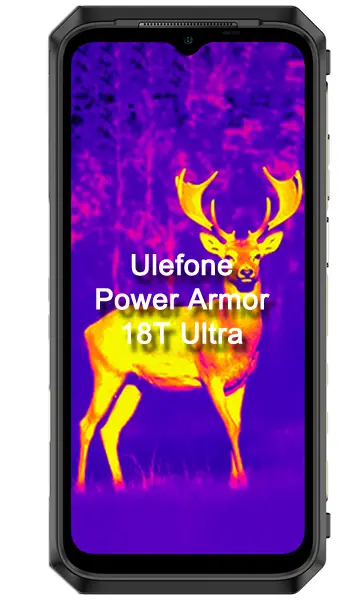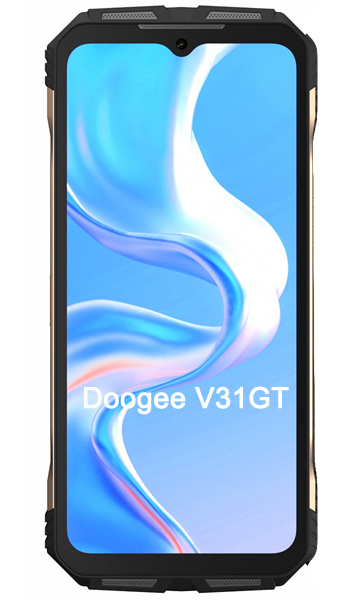Ulefone Power Armor 18T Ultra vs Doogee V31GT Comparación y Diferencias
Smartphone 1

Ulefone Power Armor 18T Ultra
Smartphone 2

Doogee V31GT
Smartphone 3
Ulefone Power Armor 18T Ultra o Doogee V31GT Comparación de características
o
 Características
Características
| Marca y modelo | Ulefone Power Armor 18T Ultra | Doogee V31GT | |
| Votos | (+0) | (+0) | |
| Fecha de lanzamiento | 2023, Octubre | 2023, Septiembre | |
| Dimensiones (AlxAnxProf) | 175.2 Х 83.4 Х 18.8 mm | 178.5 Х 83.1 Х 17.9 mm | |
| Peso | 409 g | 390 g | |
| Funda | Comprar en Amazon | Comprar en Amazon | |
| Colores | Black | Black, Gold, Silver | |
| Batería | 9600 mAh, Li-Po, no extraíble | 10800 mAh, Li-Po, no extraíble | |
| Precio indicativo | 370 EUR | ||
| Consultar precio | en Amazon | en Amazon |
 Pantalla
Pantalla
| Tecnología | IPS LCD | IPS LCD | |
| Pantalla táctil | sí, capacitiva | sí, capacitiva | |
| Profundidad del color | 16M | 16M | |
| Tamaño | 6.58" inc | 6.58" inc | |
| Área de la pantalla | 104.3 cm2 | 104.5 cm2 | |
| Proporción (Altura:Ancho) | 20:9 (Al:An) | 20:9 (Al:An) | |
| Proporción (pantalla:cuerpo) | 71.4% | 70.5% | |
| Resolucion | 1080 x 2408 px | 1080 x 2400 px | |
| Puntos por pulgada | 401 PPI | 400 PPI | |
| Protección de pantalla | Corning Gorilla Glass 5 | Corning Gorilla Glass 5 | |
| Otros | - 120Hz - |
- 120Hz - |
|
| Protector de pantalla | Comprar en Amazon | Comprar en Amazon |
 Cámaras y vídeo
Cámaras y vídeo
| Cámara trasera principal | 108 MP, cámara triple | 50 MP, cámara cuádriple | |
| Cámara especificaciones |
-108 MP, f/1.9, (gran angular), 1/1.52”, 0.7µm, PDAF -5 MP, f/3.0, (macro), 1/5”, 1.12µm -5 MP, f/2.2, (FLIR cámara térmica, Lepton módulo) |
-50 MP, f/1.8, (gran angular), 1/1.56", 1.0µm, PDAF -24 MP, f/1.8, (night vision), 2 infrared night vision lights -8 MP, f/1.8, (gran angular) -Thermal camera |
|
| Funciones | Hexa-LED flash, HDR, panorama | LED flash, HDR, panorama | |
| Vídeo | 4K@30fps, 1080p@30fps | 4K@30fps, 1080p@30fps | |
| Cámara frontal (selfie) | 32 MP, cámara singular | 32 MP,cámara singular | |
| Características | -32 MP, f/2.0, (gran angular), 1.2µm | -32 MP, f/1.8, (gran angular), 1/2.8", 0.8µm | |
| Vídeo | 1080p@30fps | 1080p@30fps |
 Rendimiento
Rendimiento
| Sistema Operativo (OS) | Android 13 | Android 13 | |
| Chipset | - Mediatek Dimensity 7050 (6 nm) | - Mediatek Dimensity 1080 (6 nm) | |
| Procesador central (CPU) | Octa-core (2x2.6 GHz Cortex-A78 & 6x2.0 GHz Cortex-A55) | Octa-core (2x2.6 GHz Cortex-A78 & 6x2.0 GHz Cortex-A55) | |
| Procesador de gráficos (GPU) | Mali-G68 MC4 | Mali-G68 MC4 | |
| Tarjeta de memoria externa | microSDXC (utiliza compartido/a SIM slot) | microSDXC (utiliza compartido/a SIM slot) | |
| Memoria Interna | 512GB 12GB RAM | 256GB 12GB RAM |
 Benchmark
Benchmark
| GeekBench 6 Single Core | 974 | ||
| GeekBench 6 Multi Core | 2300 |
 Comunicación y conectividad
Comunicación y conectividad
| Tarjeta SIM | Hybrid Dual SIM (Nano-SIM, modo de espera dual) | Hybrid Dual SIM (Nano-SIM, modo de espera dual) | |
| Red | GSM / CDMA / HSPA / CDMA2000 / LTE / 5G | GSM / CDMA / HSPA / LTE / 5G | |
| Frecuencias | -2G - GSM 850 / 900 / 1800 / 1900 - SIM 1 & SIM 2 CDMA 800 -3G - HSDPA 800 / 850 / 900 / 1700(AWS) / 1900 / 2100 CDMA2000 1x -4G - 1, 2, 3, 4, 5, 7, 8, 12, 13, 17, 18, 19, 20, 25, 26, 28, 34, 38, 39, 40, 41, 66, 71 -5G - 1, 2, 3, 5, 7, 8, 12, 20, 25, 28, 38, 40, 41, 66, 71, 77, 78, 79 SA/NSA/Sub6 |
-2G - GSM 850 / 900 / 1800 / 1900 - SIM 1 & SIM 2 CDMA 800 / 1900 -3G - HSDPA 800 / 850 / 900 / 1700(AWS) / 1900 / 2100 -4G - 1, 2, 3, 4, 5, 7, 8, 12, 17, 18, 19, 20, 25, 26, 28, 34, 38, 39, 40, 41, 66 -5G - 1, 3, 7, 28, 38, 41, 77, 78, 79 SA/NSA |
|
| Velocidad de internet | HSPA, LTE, 5G | HSPA, LTE, 5G | |
| GPRS | Si | Si | |
| Edge | Si | Si | |
| Wi-Fi | Wi-Fi 802.11 a/b/g/n/ac/6, banda dual | Wi-Fi 802.11 a/b/g/n/ac/6, banda dual | |
| GPS | GPS (L1+L5), GLONASS, GALILEO, BDS, NavIC | GPS (L1+L5), GLONASS, GALILEO, BDS | |
| NFC | Si | Si (market/dependiente de la región) | |
| USB | USB Type-C 2.0, OTG, magnetic connector | USB Type-C 2.0, OTG | |
| Bluetooth | 5.0, A2DP, LE | 5.2, A2DP, LE |
 Música y Audio
Música y Audio
| Radio | Wireless FM radio, RDS, grabación | FM radio | |
| Jack de auriculares | Sí | No | |
| Otros | - Altavoces estéreo |
 Otros extras
Otros extras
| Sensores | - Sensor de huella digital (montado lateralmente), Acelerómetro, Giroscopio, Sensor de proximidad, brújula | - Sensor de huella digital (montado lateralmente), Acelerómetro, Giroscopio, Sensor de proximidad, brújula | |
| Otros extras |
- 66W Carga rápida, 52% en 30 min -15W Carga inalámbrica -5W Carga inalámbrica Inversa cargad - IP68/IP69K dust/water resistant (hasta 1.5m para 30 min) -caer al hormigón resistente a hasta hasta 1.5m -MIL-STD-810H compatibilidad -Accessory connector (ulefone endoscope, microscope) |
- 66W Carga rápida, 55% en 30 min -Inversa Carga rápida - IP68/IP69K dust/water resistant (hasta 1.5m para 30 min) -caer al hormigón resistente a hasta hasta 1.8m -MIL-STD-810H compatibilidad |
Opiniones y comentarios sobre Ulefone Power Armor 18T Ultra y Doogee V31GT
Si tuvieras que recomendar uno de estos teléfonos a un amigo, ¿cuál sería y por qué? Comparte tus argumentos utilizando el botón Añadir Opinión!
